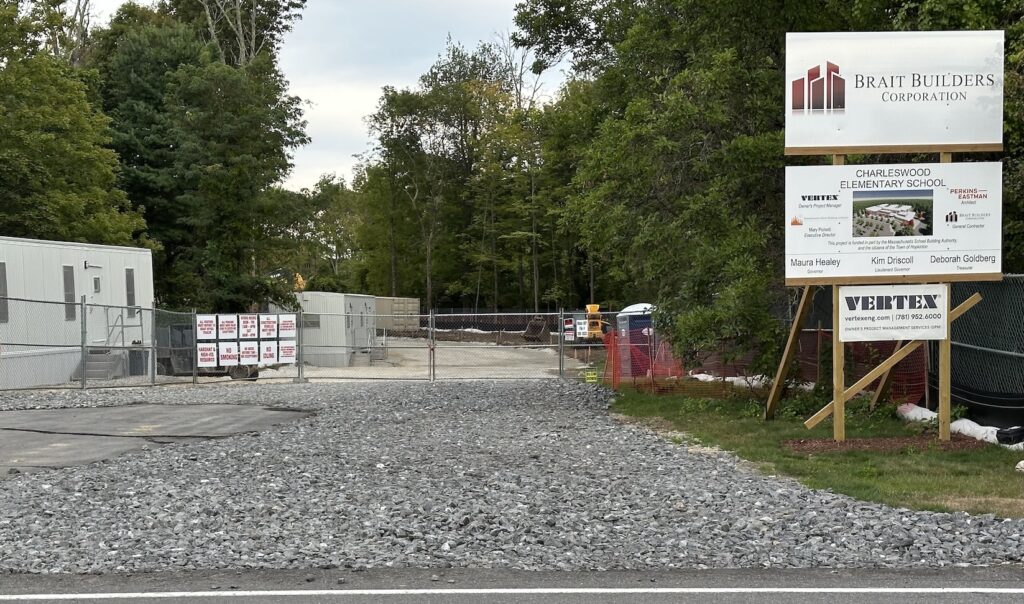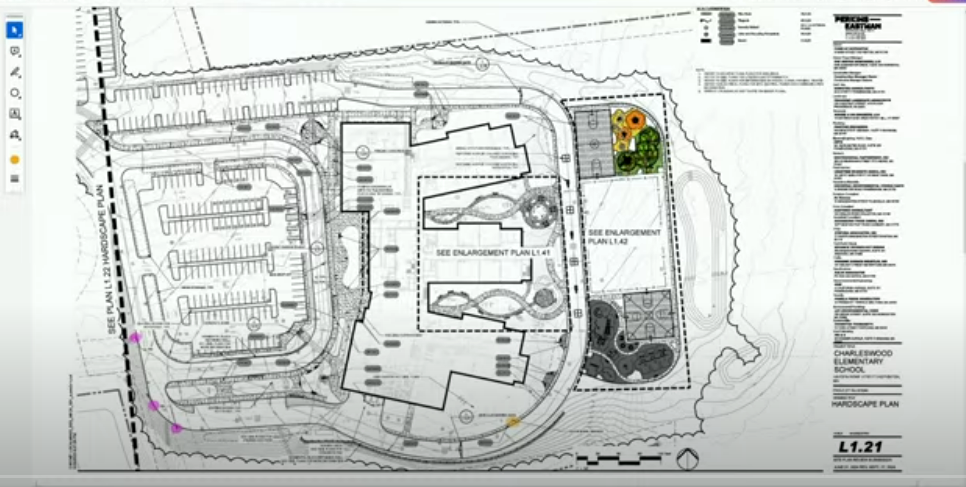The Elementary School Building Committee voted 6-0 on Tuesday to approve a budget not to exceed $158,427,494 for a proposed Elmwood School replacement. The figure is inclusive of the $1 million feasibility study previously approved by Town Meeting.
This total will be voted on in early November by Town Meeting and by residents on a ballot question for a debt exclusion.
Later Tuesday evening, the School Committee voted to endorse the ESBC’s decision with a vote of 5-0. On Wednesday evening, the ESBC will go before the Select Board for a similar endorsement.
Much of the discussion prior to the vote involved rebates, reimbursement and other factors that would eventually bring the $158 million figure down. ESBC members also talked about building materials and decisions on “alternates” they made last week.
Chris Eberly, Vertex project manager, urged committee members not to get bogged down in details about possible changes to building materials and instead focus on the task at hand — the budget.
Eberly noted the design was created after numerous meetings with focus groups that defined what was needed in the classroom. “It was education driven,” Eberly said.
Bill Flannery, an ESBC board member on the Appropriation Committee, expressed concern about the certainty of the numbers being presented for possible MassSave rebates and Inflation Reduction Act funds for energy efficiencies in the design.
This money would become available when the project closes out years down the line. The amounts cited were $2 million in MassSave rebates and IRA funds totaling $5 million, which Vertex project director Jeff D’Amico said is on the conservative side.
Coupled with an expected Massachusetts School Building Authority reimbursement of between $44 million and $46 million, the town’s contribution when the project closes out would be $105.5 million to $108 million, Vertex officials said.
The latter numbers do not include $10 million to $12 million in contingencies, which could make the contribution ultimately under $100 million, Flannery said.
However, D’Amico added about the contingencies, “You will use most of it.”
It is difficult to guarantee how the energy rebates will total exactly because a few more years of history are needed to show trends in other communities adopting efficiencies, D’Amico said.
ESBC chair Jon Graziano said it is not a matter of Hopkinton not getting the rebates. He said the town already is in the MassSave program.
Graziano said the ESBC’s mission is to be economically responsible while not compromising the finished product.
“It’s not like we cut a bunch of stuff” that severely harmed the educational quality of the proposed new school, Graziano said.
Superintendent Carol Cavanaugh agreed with that assessment.
Last week, the ESBC reached a consensus on some proposed “alternates” and wanted further discussion on others.
Members agreed to downgrade to a stone dust parking lot to save $223,707 and remove an irrigation system at play and physical education fields to save $198,240.
A long discussion ensued about whether to upgrade from FRP (fiberglass-reinforced plastic) paneling to tile for about 20% of the proposed building. The change would cost $144,319 more. Eberly said it is an issue of durability and texture, and either material would be “suitable for this environment.”
He urged the committee to use contingency money down the line rather than add this amount to the budget now.
But some members debated whether that would be the correct approach to take. Ultimately, the ESBC decided to defer it to design development and pay for changes if they are wanted as the project moves along.
If approved, the project would have the following timeline: December 2023 to April 2024 for design; April 2024 to June 2025 for construction documents; June 2025 to December 2027 for construction; January 2028 for tentative move-in date; 2028 first quarter for construction closeout; and 2030 for Massachusetts School Building Authority closeout.
D’Amico said there is a chance the building could open to students a few months earlier, but he is using a conservative timeline.
During the School Committee meeting following ESBC’s adjournment, members had few questions, having heard the presentations and discussion. But they talked about the life spans of FRP versus tile (20-25 years versus 30-50 years) and the project’s cost per square foot of $714.
School Committee member Adam Munroe spoke about the process to date.
“The folks involved are seeking out every opportunity possible to educate our students but trying to look at ways to do that in the most cost-efficient manner. It’s very eye-opening,” he said.
Member Holly Morand thanked the ESBC for “making it clear what the town is looking at” and expressed gratitude that information on the project is available to the community at large.
Graziano noted the ESBC’s focus now would be on outreach to the public and answering questions leading up to Town Meeting.



















0 Comments